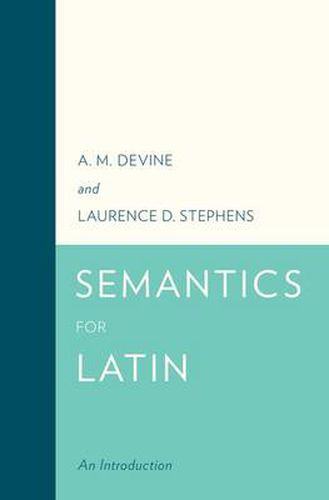Readings Newsletter
Become a Readings Member to make your shopping experience even easier.
Sign in or sign up for free!
You’re not far away from qualifying for FREE standard shipping within Australia
You’ve qualified for FREE standard shipping within Australia
The cart is loading…






The advent of the new discipline of Formal Semantics around forty years ago has resulted in a vast expansion in our knowledge and theoretical understanding of grammatical meaning. Semantics for Latin collects together this new material, applies it to Latin, and makes the results accessible to a Classical audience. The issues confronted by Formal Semantics are mostly those that comprise the core subject matter of Latin grammar. Formal Semantics, however, is not just a new way of doing an old subject: the richness and explanatory depth of its analyses, together with their striking elegance and precision, go far beyond anything that was achieved by the rather vague notional semantics used in our classroom textbooks and in the standard German reference grammars. Thus, apart from its intrinsic interest, the material in this book will be of real practical value to students and teachers of Latin and, more generally, to scholars engaged in any discussion of Latin textual meaning.
$9.00 standard shipping within Australia
FREE standard shipping within Australia for orders over $100.00
Express & International shipping calculated at checkout
The advent of the new discipline of Formal Semantics around forty years ago has resulted in a vast expansion in our knowledge and theoretical understanding of grammatical meaning. Semantics for Latin collects together this new material, applies it to Latin, and makes the results accessible to a Classical audience. The issues confronted by Formal Semantics are mostly those that comprise the core subject matter of Latin grammar. Formal Semantics, however, is not just a new way of doing an old subject: the richness and explanatory depth of its analyses, together with their striking elegance and precision, go far beyond anything that was achieved by the rather vague notional semantics used in our classroom textbooks and in the standard German reference grammars. Thus, apart from its intrinsic interest, the material in this book will be of real practical value to students and teachers of Latin and, more generally, to scholars engaged in any discussion of Latin textual meaning.